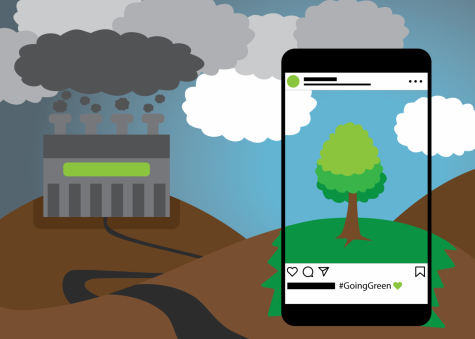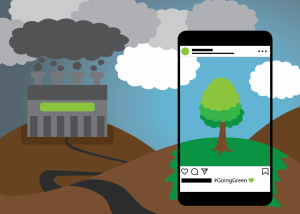The NFTea on NFTs: The Well-Being of the Environment Is Nonfungible
Nonfungible tokens may have artistic value, but they harm the environment immensely
NFTs seem like the newest in digital art and ways for people to show off wealth, but they are extremely harmful to the environment.
April 22, 2021
You might have heard about NFTs, or nonfungible tokens, which are a type of proof of purchase used to buy and sell digital art. Most of the discussion surrounding NFTs concerns their artistic value: Some say they are an innovation in the art world, while others deride them as absurd and excessive. Among this commotion, you might not have heard that NFTs put an extraordinary strain on the environment.
Art pieces sold as NFTs can take the form of media like pictures, video or music, which can be traded and viewed exclusively online. They can be original pieces from digital artists or they can be slices of the internet that have been repackaged as art, such as Twitter founder Jack Dorsey’s first tweet or a New York Times column. Although the same content may be available elsewhere online, the NFT purchased by the buyer is unique and stamped with the creator’s approval, lending it singularity.
For a more concrete example, we can compare an NFT to a Banksy mural. If you were to walk up to Banksy while he was making a mural on a public wall, and you said, “I would like to purchase this mural,” Banksy could conceivably sell you ownership of that piece of artwork. He would give you a receipt, with a signature that certifies that he has sold it to you. You could then stand beside the mural day in and day out, telling everyone who passes that you own the Banksy mural. But everyone else would still be able to enjoy the art just as if you didn’t own it, and you wouldn’t be able to take it home and mount it in your living room. This is a public wall out on the street, after all.
In this analogy, the NFT is the receipt with Banksy’s signature on it. You do own the piece of digital art, but everyone else can still see it online and enjoy it, regardless of your ownership. What you have really purchased is the ability to tell people that you alone own the art.
Currently, NFTs are a rich person’s game — pieces created by Grimes and Beeple have sold for millions of dollars. These exorbitant prices have generated criticism of the whole affair as a pointless hobby for wealthy people. There are certainly plenty of those, and while this one might seem harmless, the environmental consequences of NFTs affect all of us.
NFTs are bought and sold through the use of blockchain technology, also used by cryptocurrencies like Bitcoin. Blockchain stores data in a series of transactions, which are encrypted to ensure a secure exchange of money. Running a blockchain has two major energy demands: the process of verifying and chaining together new transactions and the physical servers that provide the power for the process to take place.
The fossil fuels used to power this complex operation emit around 200 kilograms of carbon dioxide per NFT, which is roughly the same amount of carbon dioxide that is emitted during a 500-mile car ride. Another way to understand that amount of energy is the amount of electricity used by an average European person every month. As more people participate in the creation and exchange of NFTs, emissions rise.
It’s not up to people experimenting with abstract, indulgent displays of wealth to determine the future of climate change.
There have been rebuttals from defenders of NFTs, who argue that cryptocurrency mining (and its subsequent carbon emissions) would continue with or without participation in NFT markets. However, that attitude fails to consider the fact that if every individual determines that their participation is harmless, then the NFT trend will explode, resulting in more mining and more emissions.
Rich people can do what they like with their money, sure — if someone wants to pay $69.3 million for what amounts to a special GIF, they can. But what they should not be able to do is accelerate global warming for their own frivolous fascinations. It’s not up to people experimenting with abstract, indulgent displays of wealth to determine the future of climate change.
The impacts of global warming and the ensuing environmental changes will be felt by everyone before they are felt by the wealthy, who have the ability to escape the effects of their own choices while holding the rest of the population out in front of them like a shield.
It is easy to get caught up in the extravagance of the whole ordeal. It is also a challenge to conceptualize how online transactions can directly cause so much tangible harm. But that is why it is so important to stay informed of these kinds of developments — NFTs may appear silly, but their cost is serious.
Some artists and marketplaces have committed to offsetting the carbon emissions from their art by investing in technology that aims to mitigate global warming. However, it is not enough to merely hope that artists will choose to shoulder the burden of NFTs. If we are to plan for a future with NFTs, we must have a more reliable way to counteract their ramifications.
Global warming is already in a precarious place. Hope is not yet lost, but action on every level is necessary if we want to preserve any part of life as we know it. With this in mind, it seems clear that NFTs cannot be a contributing factor in the potentially irreversible disaster of climate change. Planet Earth deserves better than that.





















